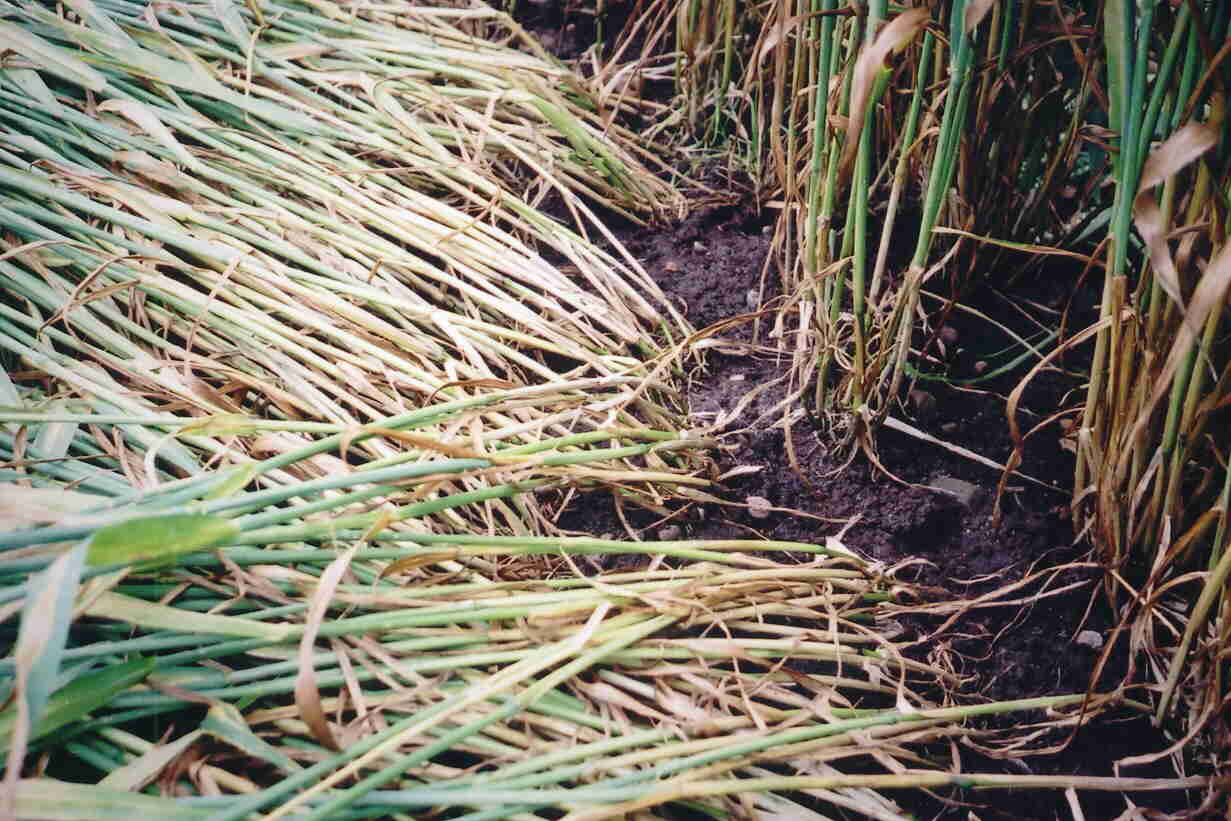Plant growth regulators (PGRs) are synthetic compounds which can be used to reduce lodging in several crop species including cereals and oilseed rape. They are most commonly used for this purpose in north and western European countries and in North America (Rademacher, 2000). In the UK, about 90% of the winter wheat is treated with PGRs.
PGRs can be classified into two main groups: inhibitors of gibberellic acid biosynthesis and ethylene-releasing compounds. The most commonly used inhibitors of gibberellic acid biosynthesis in cereal crops are chlormequat chloride, mepiquat chloride, trinexapac-ethyl, and prohexadione-calcium [Rademacher, 2000]. Ethephon is the most commonly used ethylene-releasing compound on cereals [Rademacher, 1993]. Plant growth regulators have been shown to be a cost-effective method of reducing the incidence of lodging. PGRs applied before the emergence of the ear reduced lodging in almost all of the vast number of published experiments that have studied their effect and in which lodging occurred, with reductions in the percentage area lodged of anything up to 70% [Berry et al., 2004]. The primary mechanism by which PGRs have been shown to reduce lodging risk is by reducing crop height, with height reductions of up to 40% [Berry et al., 2004]. The variation on plant height reduction is probably caused by interactions between the type of active ingredient, the cereal species together with the stage of plant development, and the environmental conditions when the chemical is applied. No evidence has been found for PGRs to increase the strength of the stem or of the anchorage system [Berry et al., 2000; Crook et al., 2000], although it must be recognized that only two studies have investigated the effects of PGRs by directly measuring stem and anchorage strength. Chlormequat has been shown to be effective at reducing lodging in winter and spring wheat, oats, and rye but less effective on barley [Humphries (1968; Matthews & Thompson, 1983)]. Barley undergoes large height reductions in response to a mixture of ethephon and mepiquat chloride [Herbert, 1982; Stanca, 1979].
Berry PM, Sterling M, Spink JH, Baker CJ, Sylvester- Bradley R, Mooney S, Tams A, Ennos AR (2004) Understanding and reducing lodging in cereals. Adv Agron 84:215–269
Berry PM, Griffin JM, Sylvester-Bradley R, Scott RK, Spink JH, Baker CJ, Clare RW (2000) Controlling plant form through husbandry to minimise lodging in wheat. Field Crops Res 67:59–81
Crook MJ, Ennos AR (1995) The effect of nitrogen and growth regulators on stem and root characteristics associated with lodging in two cultivars of winter
wheat. J Exp Bot 46:931–938
Herbert CD (1982) Growth regulation in cereals chance or design? In: McLaren JS (ed) Chemical manipulation of crop growth and development. Butterworth Scientific, London, pp 315–327
Humphries EC (1968) CCC and cereals. Field Crop Abstr 21:91–99
Matthews S, Thompson WJ (1983) New roles for growth regulators in cereal production. In: Wright DW (ed) The yield of cereals. Royal Agricultural Society of England, London, pp 25–31
Rademacher W (2000) Growth retardents: effects on gibberellin biosynthesis and other metabolic pathways. Annu Rev Plant Physiol Plant Mol Biol 51:501–531
Rademacher W (1993) PGRs- present situation and outlook. Acta Hort 329:296–308
Stanca AM, Jenkins G, Hanson PR (1979) Varietal responses in spring barley to natural and artificial lodging and to a growth regulator. J Agric Sci (Camb) 93:449–456


